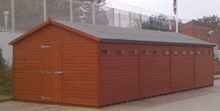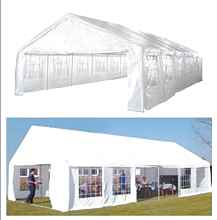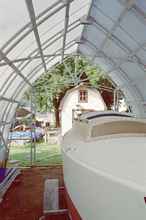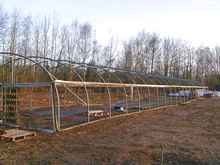
 Custom Search
|
|
| sails |
| plans |
| epoxy |
| rope/line |
| hardware |
| canoe/Kayak |
| sailmaking |
| materials |
| models |
| media |
| tools |
| gear |
 |
 |
| join |
| home |
| indexes |
| classifieds |
| calendar |
| archives |
| about |
| links |
| Join Duckworks Get free newsletter Comment on articles CLICK HERE |
|
|
| Mike's Maritime Meanderings |
|
Part One - Part Two - Part Three With Christmas over and our annual pilgrimage to the time share in Madeira behind us its time to look towards the upcoming build of my Noyo Trawler. It won’t be possible to start the build for a few months yet due to cold weather and rain, but the building site needs to be prepared and some cover provided to shield the work from the elements. This choice is no easier to make than the selection of the boat and the dinghy as there are a number of options, each with different pro’s, con’s and restrictions, not to mention costs. The garage will not accommodate the build, even if it was empty it would be too small and far too low. So the site I have in mind is 100 foot from the house at the end of the garden. The two sets of gates to the road have already been made and a plastic honeycomb structure – Hexapath, has been laid on the ground with grass planted to look like a lawn. This provides extra parking and grip for the car, a Landrover Discovery TD5, when pulling the boat up the slope.
Working out in the open is not an option in the British weather, our annual two week summer can occur any between March and October, with the rest of the time ranging from cloudy to wet. So a shelter is definitely needed, I considered renting but could find no place available locally, which would have brought other problems such as ease of access, commuting time, security for tools and materials not to mention the added cost and continuity. The best place to start the boatshed is, as usual, with a list of requirements:
A number of options presented themselves and most were eventually discarded for one reason or another: Solid wood shed sounds a like the best idea but for a shed of that size the building regulations department of the local council would need to be involved, to ensure it is properly built. Apart from the added bureaucracy, which I don’t want to get involved in, I didn’t want a permanent structure. In addition the materials cost is prohibitive at over £1500 to do a good job.
Metal cladding shed, similar to the wooden shed, in that it will need a wooden structure to hold the cladding in place. Though it would be secure and last for a good number of years (probably more than I will) it has the same downsides as the wooden shed.
Marquee, again sounds good, and many cheap marquees are available for about £400, the trouble is that they are not so secure from what I have seen. To get a good one with a decent resale price I would need to pay about £800 and then you have a structure designed to be fixed to the ground for use by humans 6’ high, not an extra height boat on a trailer. To adjust the structure to fit on top of a wooden edging is more expensive still.
Bow roof shed (see Stimpson Marine). This seems to be the route a number of builders have taken, many to good effect particularly in North America. See sites like the Arctic Tern Build or the Microcruising site. The strengths of this structure are in the height and angle of the roof which will shed snow and stand up to strong winds. For many months I was convinced that this was the way to go and searched for the materials required. But for my situation I became convinced that it was not the best solution.
Polytunnel, again another enticing option, and one which I actively pursued for a while. The tunnels available don’t have the height I need without extra side walls and work out quite expensive new for the size I need. Second-hand may have been an option. Where I live in the Vale of Evesham is quite a big fruit growing and agricultural area, and a number of businesses have gone out of business in the last few years. I had my eye on one such enterprise which was on my daily commute to work, it consisted of about 20 very large polytunnels with old covering broken and decayed, it had been like that for several years. Just as I was going to ask who the owner was and would it be possible to buy half of one of the tunnels the site was redeveloped and new covering put on the hoops.
Polythene with timber support Having decided on the structure what about interior decoration? I need power and light, fortunately I kept some old strip lights when I cleared out my parent bungalow, I remember my father installing these lights in our loft when I was in my teens, all they needed were new tubes and starters (you can’t beat old, well made, lights and machines). The three of them should provide sufficient light for background. A 35m extension lead will provide power from the house and a small consumer unit will provides protection and could be used in the boat, when it is waterproof and the shed is dismantled. Because it is a temporary structure I don’t want to spend too much money on the floor, a simple weed control mat covering with some small concrete slabs levelled up to support the building frame should suffice. What else do I need? A work bench would be good, simple to fit at the end of the shed and at 14’ wide should allow for most eventualities. I can easily put up a long shelf down the length of the shed to make the mast on when required, or maybe do that in the garage next winter. Having explored the possibilities part two of this article will cover the design and building, I may do a part three in a year or so evaluating the shed after some practical use. ***** |








